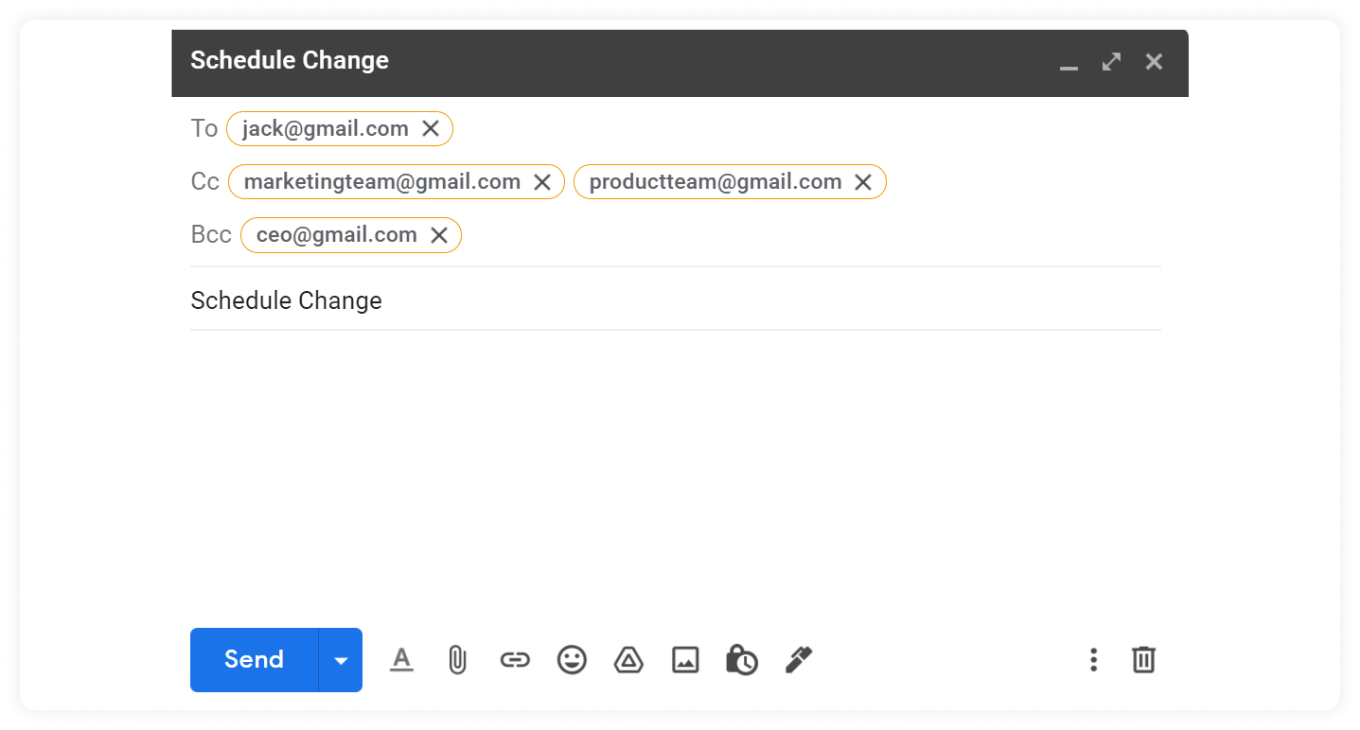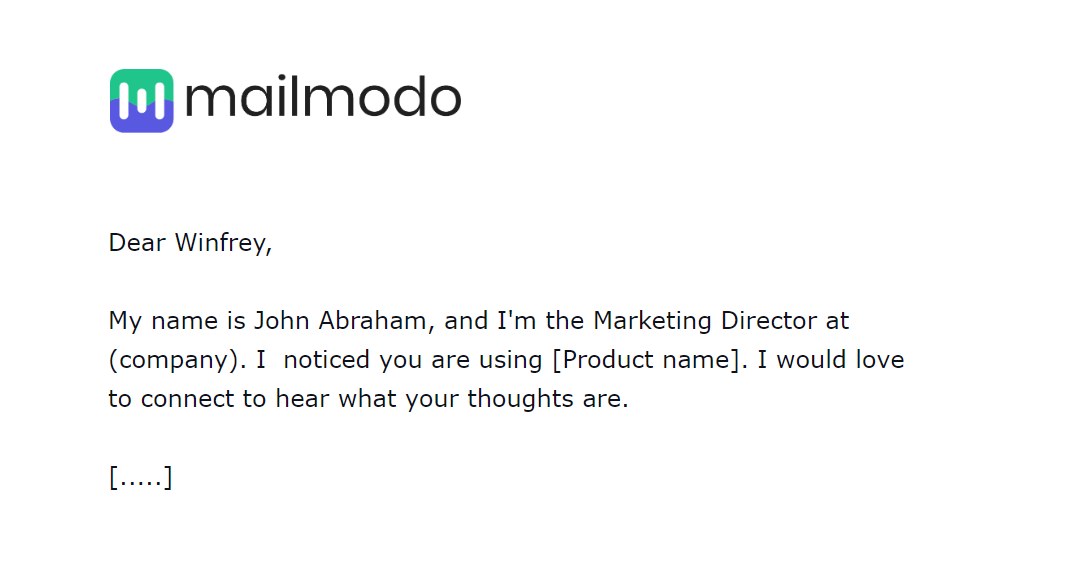Every day, we process millions of emails as an email marketing platform. Email is the most common and easy way for professionals and businesses to communicate. Emails can make or break your marketing efforts, and poorly written emails have the potential to damage your brand.
However, there are a few email etiquette for professionals to avoid errors and create better emails that impress people on the other end.
What is email etiquette?
Email etiquette is a crucial set of principles for socially and professionally acceptable email communication. It encompasses language, structure, grammar, and tone, which vary depending on the recipient and context, such as professional or personal emails.
Why is email etiquette important?
Good email etiquette helps communicate better and create strong relationships. Speaking in person versus communicating over email is entirely different. One phrase in the wrong context could lead to miscommunications which can hurt your brand.
That's why following proper email writing etiquette is so important because it helps you convey relevant information effectively. It also helps achieve the following:
Professionalism: Using proper email language, you and your organization will convey a professional image.
Efficiency: Emails that get to the point in providing necessary information are much more effective than badly conveyed emails.
Clarity of expression: Using an appropriate tone will help you avoid being misunderstood or misinterpreted.
Protection from liability: Awareness of email stakes will protect you and your organization from costly lawsuits.
Email etiquette trends: past vs present
To determine how much email etiquette has changed, we conducted a survey using Google Forms and sent it to several working professionals through social media and other platforms.
Here, we'll share with you what we concluded from the survey results and how the etiquette has changed.
1. Salutation
A few years ago, even the thought of using "Yo folks" to address people in a professional email would have been ridiculous and inappropriate.
But, with the emergence of more informal workplaces, the line between casual and professional etiquette has blurred.
When we surveyed a few working professionals, we found that nearly 46% of individuals find it a good idea to use casual salutations like "Hey all" and "Yo folks."

However, many people are still uncomfortable with such casual greetings in a work environment. So, if you wish to play it safe, you can use words like "Dear," "Hi," "Hello," etc., to address the person you are sending the email to.
Nowadays, some people even send emails without a salutation, and while this might work for some people, it's not for everyone, so it's best to play safe until you get the hang of your work culture.
2. Emojis
Emojis were once considered too casual but are now accepted in many offices. According to our survey, a whopping 63% of people find emojis in emails acceptable.

They use emojis to make it more expressive and add flair to their emails. And I'm sure Gina Linetti would approve of this etiquette.

But, she is not known for her professionalism. So, if you are unsure if your office would find it acceptable, refrain from using emojis unless other colleagues use them in their emails.
3. Sign-off
Sign-offs are one aspect of the email that has not gone too casual. At least not yet.
Most people used to write "Yours sincerely" initially, but emails are not formal letters, so we have moved on from it.
Now, most people use words like "Regards," "Cheers," and "Sincerely" in their emails while signing off.

4. One-line reply
Short replies of only one line were considered rude and abrupt, but they have become acceptable. People might use such short responses because they are busy and must communicate quickly.

Such short email replies can be sent to colleagues, but we recommend avoiding using one-liners when emailing someone higher up.
15 email etiquette rules to follow and examples
You should always follow appropriate email etiquette to be considered professional and serious. Here are some email etiquette do's and don'ts that you can follow:
1. Use a professional email address
Create and use a formal email address that people can remember. Your email address can contain your contact information like first name or a combination of your first and last name. You can also use one or two numbers in your email address. Don't use weird names and symbols in your email address.
| Do's | Don'ts |
|---|---|
| ✔️ johnabby@gmail.com | ❌ imacreator@gmail.com |
| ✔️ johnabby@yourdomain.com | ❌ eve18m04@yahoo.com |
2. Write clear subject lines
People use subject lines to determine whether or not to open an email. Subject lines should give context to the email copy and not trick users into clicking them.
Considering email etiquette, use short and clear subject lines. Tell people what they can expect from the email, and never send an email without a good subject line.
| Dos | Don'ts |
|---|---|
| ✔️ You're invited to our upcoming webinar | ❌ FREEDOM SALE!!!!!! GET 50% OFF NOW |
| ✔️ Marketing team meeting at 11 AM tomorrow | ❌ Touching base with you! |
3. Maintain a professional tone
More important than what you say is how you say it. To follow email etiquette, the best way is keep your tone friendly and polite when writing emails.
| Dos | Don'ts |
|---|---|
| ✔️ Provide information that's factual rather than emotional. | ❌ Never write an email in ALL CAPS since it reads as shouting and comes out as harsh. |
| ✔️ Ensure that your message is clear, concise, and free of any grammatical errors | ❌ Avoid negative words, forms of humor, and sarcasm in emails. |
4. Keep the copy clear and concise
When writing the copy of your email, it's best to start with the core message first and then explain the context of why you are sending the email. Avoid writing long emails with too many paragraphs. Instead, you can use bullets to send important information in a concise and legible manner.

5. Mark recipients in the appropriate tags
The' To' field must mention the people who must take any necessary action related to the email.
For example, you can put your assistant in the 'To' section when sending an email to ask her to change your schedule.
The CC (carbon copy) field can be used to include people you don't wish to take action with but who should be aware of the changes.
The BCC (blind carbon copy) field is where you add recipients whose identities must remain hidden. The other email recipients cannot see the people who are added to the BCC.

6. Read the copy twice before sending
It is one of the most common mistakes in following email etiquette. Sending email copies with grammar or spelling errors can hurt your reputation.

Read your email copy and subject line twice before clicking the 'Send' button.
✔️ Check for grammar, typos, context errors, and formatting errors.
✔️ Try rephrasing your copy so it's more concise.
7. Be mindful of 'Reply all'
We are all aware of how many emails we receive each day. Using the 'Reply all' only when essential can help avoid sending unnecessary emails to people. Use 'Reply all' only when all people should be aware of the message.
8. Don't share controversial topics
One of the most important business email etiquette is never to share problematic and awkward information. If you get an email with offensive language (racist, sexist, etc.), don't forward it to others because doing so could harm your reputation.
9. Don't send confidential or private information in email
Your email remains on the server even after you have deleted it from your account. So, discussing sensitive material in person or over the phone is preferable rather than by email.
10. Email signature etiquette
An email signature is the most overlooked part of an email. Adding a professional email signature can help your audience know about you and your business. It is a professional email etiquette in business communication.

| Do's | Don'ts |
|---|---|
| ✔️ Add full name and contact details. | ❌ Add no more than 4 to 5 lines |
| ✔️ Insert photo, company website, and address. [Optional] | ❌ Adding image-only signatures |
| ✔️ Add social media links. [Optional] | ❌ Non-responsive signatures |
11. Avoid excessive or unfamiliar email abbreviations
Refrain from using abbreviations in business emails, which is considered poor email etiquette. Working professionals don't have much time to read and respond to emails. So, write direct words instead of using abbreviations that you only know.
✔️ Spell out words instead of using abbreviations whenever possible.
✔️ Limit acronyms and initialisms to those commonly understood within your industry or organization.
✔️ If you must use abbreviations, provide a brief explanation or definition to ensure clarity.
✔️ Consider the recipient's familiarity with the abbreviations you use. If in doubt, err on the side of spelling out the word.
✔️ Avoid using excessive abbreviations that might confuse or alienate the reader.
12. Always introduce first
Your recipient will not know you unless you introduce yourself. Mention who you are, what you do, and why you are reaching out.
✔️ Make your intro short.
✔️ Mention about your company.
✔️ State your motive.

13. Shorten or hyperlink the URL
Adding a complete URL to the email content will look messy and affect readability. Instead, shorten your URLs or use hyperlinks to make your emails look clean and easy to read.

14. Check your attachments
Missing email attachments and inserting large files affect email etiquette and harm user experience.
✔️ Check your emails for file attachments before sending them.
✔️ Upload large files to the cloud and insert the URL of the files.
15. Consider Accessibility
The last thing to watch out for is accessibility. It is crucial to ensure email etiquette. Make sure your email format is accessible to all users and email clients.
✔️ Use standard fonts and proper sizing.
✔️ Choose black color over others.
✔️ Don't overuse bold and italic properties.
Wrapping up
Many thanks for sticking with us. I believe you now better understand professional email etiquette and how to write business emails without any errors. Ensure you follow all the rules in this article to ensure proper communication and build better relationships.
Save time with AI-powered email content creation










